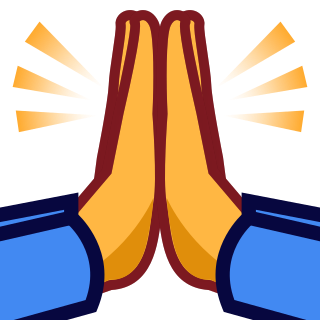 Emojis can clarify the meaning of text messages, but their meaning is not always clear. Read here about the meanings and pitfalls.
Emojis can clarify the meaning of text messages, but their meaning is not always clear. Read here about the meanings and pitfalls.
Smiley, emoticon, emoji
Anyone who communicates via Whatsapp, Facebook Messenger or e-mail will probably come across a small picture of a face or object. Such a picture is called an emoji or emoticon. The yellow faces are also called smileys. Emojis help to understand each other better when people communicate through text, for example in chats, emails and other text messages. The pictures somewhat replace the missing non-verbal communication, such as hand gestures or facial expressions. But what do the figures and other icons mean?
Origin of emojis
Emojis are originally from Japan. The first icons for placing in text messages already existed there in 1999. Emojis made their way to western countries when major US companies such as Apple and Google also wanted to become popular in Japan. They saw that emojis were widely used there and decided to integrate them into their services as well. However, the Japanese emojis were not readable by Western operating systems, so the companies each made their own set of emojis. This is why emojis don’t look the same in all systems or are visible at all. The same emoji can therefore look different on, for example, a Huawei smartphone than on an iPhone.
Emojis are updated annually. Then usually new ones are added and confusing pictures are adjusted or removed.
Emojis from other cultures
That the emojis are taken from another culture is also clear from the meaning of some emojis. .png) For example, the pictogram of a smiling turd is funny, but it doesn’t really mean anything to the Dutch. In Japan, the emoji turd is a symbol of good luck. This comes from a pun. The Japanese word for poo starts with the same sound as the word for happiness. Designers have given the turd a smiling face to make it clear to non-Japanese that the turd is intended as a positive signal.
For example, the pictogram of a smiling turd is funny, but it doesn’t really mean anything to the Dutch. In Japan, the emoji turd is a symbol of good luck. This comes from a pun. The Japanese word for poo starts with the same sound as the word for happiness. Designers have given the turd a smiling face to make it clear to non-Japanese that the turd is intended as a positive signal.
 The “folded hands” emoji also has a different meaning than some people think. The original meaning of the two palms together emoji is ‘please’ or ‘thank you’. However, Western users often mistake this emoji for a high five or prayer.
The “folded hands” emoji also has a different meaning than some people think. The original meaning of the two palms together emoji is ‘please’ or ‘thank you’. However, Western users often mistake this emoji for a high five or prayer.
What does this emoji mean?
Most emojis are self-explanatory, but some of them are misused or have a double meaning.
 Tears of joy
Tears of joy
One of the most used emojis is ‘tears of joy’. The emoji represents a face that laughs so hard that it brings tears to its eyes. It usually accompanies a happy, funny message. However, because of the tears, this icon is often mistaken for a crying face. So be careful when looking for an emoji with a sad message.
.png) heart shaped eyes
heart shaped eyes
The meaning of the doll with hearts as eyes is similar to the heart. Use it to express appreciation or love.
 the heart
the heart
The classic red heart is used to indicate that something is nice (similar to a ‘like’ as below). A heart can be romantic, but also friendly.
 Thumbs up
Thumbs up
We all know the thumb from the Like button on Facebook. Use it to indicate that something is nice or that you agree with something.
 raised hands
raised hands
Some users mistake the two raised hands emoji for a sort of “hallelujah” gesture. Only this picture is usually not used in divine context, but when someone has something to celebrate.
 The eggplant
The eggplant
It’s a bit bawdy, but the aubergine is often used as a symbol for the male genitals. It is also often used in combination with the image of water drops: 
.png) . It doesn’t take much imagination to figure out what that means…
. It doesn’t take much imagination to figure out what that means…
 The Peach
The Peach
The peach is the feminine counterpart of the aubergine. The picture represents buttocks, the female genitalia or is used for other sexual subtext.
 Fire
Fire
Of course the icon for fire can be used to indicate that something is warm. Among young people it often means that they find something cool, cool or cool. This comes from the English buzzword ‘lit’ which means that something is nice, but it actually means ‘lit’.
Tip
If you are in doubt whether an emoji is suitable, you can visit the website of Emojipedia find the meaning and see how it looks in different systems. The site is only in English.
typed faces
Even if the program you’re texting with doesn’t have emojis, you can send faces. You can then fall back on a typographic display using punctuation marks, such as the colon and parentheses. For example the wink 😉 (tilt your head to the left if you don’t see the wink).
Emoji or no emoji?
Not everyone uses emojis equally often or in the same way. One uses them to spice up a message, the other to type fewer words. Another uses them to make sure the message gets through as intended. There are no rules. It is wise to exercise restraint in a professional or official context. The use of emojis can seem a bit unserious.